Principal Investigator Team Masters Forum 4
The NASA Academy of Program/Project & Engineering Leadership conducted its third Principal Investigator (PI) Team Masters Forum July 28-29, 2011, in Annapolis, Maryland.
The forum, a collaborative effort among the Academy NASAs Science Office for Mission Assessments (SOMD), and NASA’s Science Mission Directorate (SMD), brought together teams from the Discovery mission announcement of opportunity (AO) process and the Mars 2016 Trace Gas Orbiter mission to gain a better understanding of the role of a Principal Investigator (PI) at NASA. Master practitioners from past science missions shared stories, perspectives, lessons learned, and best practices with their colleagues.
View All Past PI Team Masters Forum Videos
Download the Principal Investigator Team Forum 4 Notebook.
Panel Chairs and Presenters
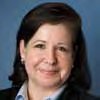 |
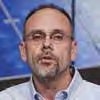 |
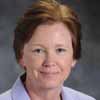 |
 |
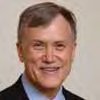 |
 |
 |
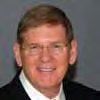 |
 |
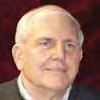 |
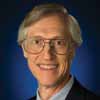 |
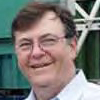 |
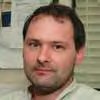 |
 |
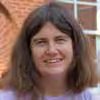 |
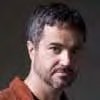 |
 |
 |
 |
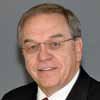 |
 |
 |
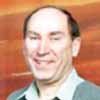 |
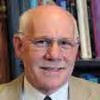 |
 |
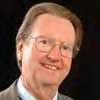 |
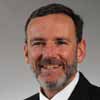 |
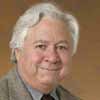 |
 |
 |
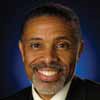 |
|||||
Presentations
Speakers
- James L. Burch is vice president of the Space Science and Engineering Division at Southwest Research Institute. He received his BS in physics in 1964 from St. Marys University of Texas and his PhD in space science from Rice University in 1968. He was principal investigator for the Dynamics Explorer 1 high-altitude plasma instrument, the ATLAS-1 Space Experiments with Particle Accelerators, and the Imager for Magnetopause-to-Aurora Global Exploration mission. Currently, he is principal investigator for the ion and electron sensor for the European Space Agency Rosetta comet orbiter and for the instrument suite science team for the Magnetospheric Multiscale mission to be launched in 2014.
- Liz Citrin joined Goddard Space Flight Center in 1987, working on Hubble Space Telescope through the deployment and first servicing mission. She then joined the Wilkinson Microwave Anisotropy Probe (WMAP) mission as the systems lead and later became the project manager. WMAP launched in June 2001, studying the cosmic background radiation with unprecedented precision and accuracy, and answering some of cosmologys most fundamental questions. Ms. Citrin became the project manager for the Solar Dynamics Observatory (SDO), the first space weather research mission in the Living with a Star program. SDO launched in February 2010. Immediately after the SDO launch, Ms. Citrin joined the Joint Polar Satellite System program as the deputy program manager.
- Bryan Fafaul has worked at the Goddard Space Flight Center since 1986 in a wide variety of technical and management positions. He started his career in the Parts Branch and then moved into project management. Mr. Fafaul has served as the mission manager for the Wide-Field Infrared Explorer; instrument systems manager for Hubble Space Telescope Servicing Missions 3A, 3B, and 4; deputy project manager for the National Polar-orbiting Operational Environmental Satellite System Preparatory Project; and project manager for Glory prior to his current position as the project manager for the Joint Polar Satellite System flight project.
Abstracts
MAP
The Wilkinson Microwave Anisotropy Probe (WMAP) mission reveals conditions as they existed in the early universe by measuring the properties of cosmic microwave background radiation over the full sky. This microwave radiation was released approximately 380,000 years after the birth of the universe. WMAP creates a picture of the microwave radiation using differences in temperature measured from opposite directions (anisotropy). The content of this image tells us much about the fundamental structure of the universe.
WIRE
The Wide-field Infrared Explorer (WIRE) was a small satellite carrying a cryogenically cooled infrared telescope designed to study starburst galaxiesvast clouds of molecular gas cradling the sites of newborn stars. Developed under NASAs Small Explorer Program, WIRE was intended to have a four month primary mission.
WIRE was launched on a three-stage Pegasus XL vehicle released from an L-1011 aircraft over the Pacific Ocean after takeoff from Californias Vandenberg Air Force Base on March 4, 1999. The satellite was successfully placed in orbit around Earth at an altitude of 540 kilometers (about 335 miles).
The mission failed soon after launch when the cover on the telescope/cryostat ejected prematurely.
Uncontrolled heating of the cryostat caused the solid hydrogen cryogen to be expelled and resulted in the satellite spinning out of control. Flight controllers ultimately regained control of the satellite, but the primary science objectives were lost, as the infrared detectors could not be cooled.
Presentations
Speakers
- M. Patrick McCormick has been performing research on the development and application of sensors for measurement in Earths atmosphere for the past forty-seven years. This research has primarily focused on lidar and satellite limb extinction (occultation) techniques for global characterization of aerosols, clouds, ozone, and other atmospheric species. He is a Fellow of the American Geophysical Union, a Fellow of the American Meteorological Society, and a member of NASAs Advisory Council Earth Science Subcommittee. Dr. McCormick is principal investigator for SAM II, SAGE I, SAGE II, SAGE III, and LITE, and coprincipal investigator for SAM and Cloud-Aerosol Lidar and Infrared Pathfinder Satellite Observation satellite experiments.
- Steve Saunders was a scientist at the Jet Propulsion Laboratory (JPL) in Pasadena for thirty-two years. At JPL he was project scientist for the Magellan Venus mission and the Mars Odyssey mission. After leaving JPL, he worked at NASA Headquarters for five years, where he was NASA program scientist for the Planetary Data System, Mars Reconnaissance Orbiter, and Mars Express. He also managed NASAs Planetary Geology and Geophysics Program, which supports about 170 U.S. scientists.
- Steve Saunders was a scientist at the Jet Propulsion Laboratory (JPL) in Pasadena for thirty-two years. At JPL he was project scientist for the Magellan Venus mission and the Mars Odyssey mission. After leaving JPL, he worked at NASA Headquarters for five years, where he was NASA program scientist for the Planetary Data System, Mars Reconnaissance Orbiter, and Mars Express. He also managed NASAs Planetary Geology and Geophysics Program, which supports about 170 U.S. scientists.
- G. Scott Hubbard has been an innovator and leader in science, technology, and management for more than thirty years, including twenty years with NASA. He currently is a professor in the department of aeronautics and astronautics at Stanford University. From 2002 to 2006, Mr. Hubbard was the director of Ames Research Center. In 2003 he served as the sole NASA representative on the Columbia Accident Investigation Board, where he directed impact testing that demonstrated the definitive physical cause of the loss of Columbia. In 2000 he served as NASAs first Mars program director and successfully restructured the entire Mars program in the wake of mission failures. He is the founder of NASAs Astrobiology Institute. He conceived the Mars Pathfinder mission with its airbag landing and was the manager for NASAs highly successful Lunar Prospector Mission.
- Orlando Figueroa retired from NASA in 2010 to start the Orlando Leadership Enterprise, LLC, aerospace consulting company. His career with NASA spanned thirty-three years at the Goddard Space Flight Center and NASA Headquarters (HQ), and includes many roles at Goddarddeputy center director for Science and Technology and director for the Applied Engineering and Technology Directorateand at HQdeputy associate administrator for Programs in the NASA Science Mission Directorate, director for the Solar System Exploration Division, director for Mars Exploration. He was also the Goddard manager for the Small Explorers (SMEX) project and lead cryogenic engineer for the Cosmic Background Explorer.
- Steve Jolly is the Lockheed Martin systems engineering director for the GOES-R program (next-generation weather satellites in geosynchronous orbit) in the sensors and exploration systems line of business. He is also the program manager for the Mars Reconnaissance Orbiter and was chief engineer during its development. Dr. Jolly has served project Orion off and on as an independent advisor and tiger-team lead for entry, descent, and landing (EDL), and previously served as a member of EDL systems engineering team and critical events risk process for Phoenix, Stardust, and Genesis. He was also program manager for the Mars Science Lab (MSL) aeroshell and is a member of the Independent Assessment Panel for the MSL landing-site selection.
Abstracts
Principal Investigator
An overview of the building of a PI-led team for a NASA mission will be presented as well as the important relationships the PI has with the PM and systems engineer. PI traits, qualities, and responsibilities will be addressed and will be followed by a discussion of how a PI chooses the science team and structures the mission team. Other topics to be addressed include developing a clear Mission Requirements Document and the process and importance of descoping. Finally, the importance of the total involvement and perseverance of the PI in following the mission development will be discussed along with key indicators of mission development status (e.g., the use of planned versus actual monthly milestone accomplishments).
Project Scientist
The presentation will cover experience and lessons learned as project scientist during the Mars Odyssey mission and will describe the duties of a planetary mission project scientist.
Project Manager
The multitude of roles played by the project manager (PM)ranging from daily technical management to project psychiatristwill be discussed. The criticality and complexity of the relationships between the PI and PM, PM and the mission systems engineer, and PM to NASA will be discussed. The process of building the teams infrastructure in the new world of earned value management and joint confidence level will also be presented. Examples of real-world problems and solutions from IMAGE, New Horizons, and other missions will be used to illustrate points throughout the presentation.
Systems Engineering
Systems engineering plays a critical role in space-mission development and is the right hand of the PI and the PM to ensure a low-risk, affordable achievement of the missions technical objectives. The role of the systems engineer in complex technical development is not to act as a clerk to manage a requirements database, or merely an analyst to calculate mass and power margins, but is the technical visionary that leads vertical and horizontal design and integration of the missionespecially across the major interfaces of science instruments and ground and mission operations. Roles and responsibilities of the systems engineer within the PI-led team and the essential leadership qualities, experience, and system view that past successful PI missions have practiced will be discussed, as well as the challenges of the current state-of-the-art in space-mission development that face todays systems engineers.
Contractor Team
Industry is a valuable member of the PI-led mission team and provides a different perspective from project leadership and science members. The need to embed compelling science coupled with the cost capped execution model creates a set of constraints that drive best-fit solutions. The experienced industry partner often becomes the voice of reason that seeks to accommodate the project/NASA center and PI science needs, while keeping an eye on execution risk. Industry is motivated to push for the early flow-down of science requirements, the development of a mission concept that balances complexity and cost, and prudent application of new technology that enables win discriminators. When well executed, the competed PI-led mission team effectively bonds together during the CSR and site visit activities. Examples will include Phoenix and MAVEN, including experience gained from problems and the ways they were successfully solved.
Presentations
- PI-Led Missions: Principal Investigator — By M. Patrick McCormick (PDF)
- Project Scientist Role — By Steve Saunders (PDF)
- Lunar Prospector: Managing a Very Low Cost Mission — By Scott Hubbard (PDF)
- The Successful Project Team Roles and Responsibilities: Systems Engineering — By Orlando Figueroa (PDF)
- The Successful Project Team Key Roles and Responsibilities: Industry Partner/Contractor Perspective — Steve Jolly (PDF)
Speakers
- Keith Gendreau received his PhD in astrophysics at the Massachusetts Institute of Technology in 1995, working on X-ray charge-coupled devices and the cosmic X-ray background with the Advanced Satellite for Cosmology and Astrophysics mission. He has been at Goddard Space Flight Center since 1995 and was the calibration lead on the X-ray spectrometer instrument on the ASTRO-E mission. Mr. Gendreau was the NASA scientist on the joint NASADARPA X-ray pulsar sourcebased navigation and timing study, and he is currently the principal investigator of the X-ray Advanced Concepts Test Bed sounding rocket and the Station Explorer for X-ray Timing and Navigation Technology study.
- James M. Russell IIIs research has focused on atmospheric science, remote sensing, and satellite data analysis to study properties and processes in Earths atmosphere. He began his career in electrical engineering at the Langley Research Center, developing instrumentation and performing ground and rocket reentry tests of heat-shield material used on the Gemini and Apollo capsules. He also worked on instrumentation for characterizing the Martian atmosphere during entry. Dr. Russell has served as coprincipal investigator (PI) on the Nimbus 7 Limb Infrared Monitor of the Stratosphere experiment, and PI for the Halogen Occultation Experiment on the Upper Atmosphere Research Satellite (UARS). He currently serves as PI for the Sounding of the Atmosphere using Broadband Emission Radiometry experiment on the Thermosphere Ionosphere Mesosphere Energetics and Dynamics satellite, and PI on the Aeronomy of Ice in the Mesosphere mission. He also served as co-investigator on the Jet Propulsion Laboratory Atmospheric Trace Molecule Spectroscopy experiment launched on the Space Shuttle and the Oxford University Improved Stratospheric and Mesospheric Sounder experiment launched on UARS.
- James Fanson moved to California from Wisconsin to attend graduate school at Caltech, where he earned his PhD in applied mechanics in 1987. His twenty-five-year career at the Jet Propulsion Laboratory has spanned technology development, instrument development, and flight project implementation. Dr. Fanson was part of the team that repaired the Hubble Space Telescope in 1993 with the Wide Field and Planetary Camera 2 (now in the Smithsonian Air and Space Museum). He led the team that produced the preliminary design of the Spitzer Space Telescope and, as project manager, led two telescope missions (Galaxy Evolution Explorer and Kepler) to launch and early science operations. He is the recipient of the Lew Allen Award for Excellence, the NASA Exceptional Engineering Achievement Medal, and two NASA Outstanding Leadership Medals. He enjoys photography and exploring the remote desert regions of the American Southwest.
Abstract
AIM
The development and implementation of a satellite mission in todays world brings with it many problems, and it is often the case that many of these are unplanned and unforeseen. Consequently, the success of the mission depends heavily on the degree of preparation and anticipation of problems that has occurred going into the development. Despite such efforts, evolving technical and managerial requirements and unpredicted issues sometimes occur late in the development that could threaten mission success. A cohesive, excited, and unified team and the strength of the relationships between the principal investigator, NASA mission manager, project scientist, program executive, program scientist, and Executive Advisory Board are key factors for success. Some
of the challenges faced in the AIM mission development, steps taken to address these issues, and some lessons learned will be discussed.
GALEX
The Galaxy Evolution Explorer (GALEX) mission was selected in 1997 and launched in 2003, performing the first extragalactic wide-area imaging and spectroscopic surveys in the ultraviolet. Designed to map the history of star formation over 80 percent of the history of the universe, GALEX has changed our understanding of where and when stars form in galaxies over cosmic time. Along the way several, surprising discoveries were made, including the first detection of a 13-light-year-long tail streaming behind the star Mira, and the first observation of the ultraviolet flash at the beginning of a supernova explosion.
Although a small mission, GALEX developed the largest microchannel plate detectors ever flown in space. Begun under the faster-better-cheaper era, implementation changed radically following a string of mission failures in the late nineties. Project implementation encountered an unusual array of technical and programmatic challenges, producing a useful collection of lessons learned. GALEX was ultimately flown and checked out in orbit for $72 million. Originally intended to operate for twenty-eight months, GALEX continues to produce unique data more than eight years later.
Speakers
- Thomas J. Immel is an associate research physicist at the Space Sciences Laboratory at University of CaliforniaBerkeley (UCB). He is the principal investigator for the Ionospheric Connection Explorer mission. Currently, he is the project manager for UCBs National Science Foundation CubeSat for Ions, Neutrals, Electrons, and Magnetic fields mission, to be launched in June 2012. His expertise is in upper-atmospheric and ionospheric physics and magnetosphericionospheric coupling processes, and he has been a NASA guest investigator on both the Imager for Magnetopause-to-Aurora Global Exploration and Thermosphere, Ionosphere, Mesosphere Energetics and Dynamics missions. Dr. Immel obtained his PhD in physics from the University of Alaska Fairbanks.
- Paul Hertz is chief scientist for the Science Mission Directorate (SMD). He manages Directorate-level science activities, including the solicitation, evaluation, and selection process for SMD; the SMD Science Management Council; and SMDs research policies and procedures. He joined the NASA Office of Space Science as a senior scientist in 2000. He later served as theme scientist for the Structure and Evolution of the Universe Theme as well as senior scientist in the Astronomy and Physics Division. Other positions he has held include program executive for the Chandra X-ray Observatory, senior scientist for Space Science Research in the Research Program Management Division, program executive for Solar System Exploration missions, Stratospheric Observatory for Infrared Astronomy program scientist, Discovery program scientist, and Explorer program scientist. Prior to joining NASA, Dr. Hertz was an astrophysicist at the Naval Research Laboratory.
- Barbara Giles, Director of the Heliophysics Division at NASA Headquarters, earned her PhD in physics from the University of Alabama in Huntsville in 1993 and joined Marshall Space Flight Center, where she was part of a team that built suborbital and spaceflight heliophysics instrumentation. In 1998, she transferred to the Goddard Space Flight Center to pursue new flight mission opportunities. She stepped into the role of deputy project scientist, and was promoted later to project scientist, for the Polar and Radiation Belt Storm Probes (RBSP) missions.In 2004, Dr. Giles joined NASA Headquarters as the program scientist for RBSP and led the science procurement for that mission. Since that time she has served as the program scientist for the Solar Terrestrial Probes Program (STP) and managed the procurement for the Explorer 2011 missions. As the Heliophysics strategic planning lead, she charted the divisions course for the future by planning new missions to study the sun, its effects on Earths space environment, and its influences out to the far reaches of the heliosphere. Dr. Giles was promoted to the position of director of the Heliophysics Division in October 2011.
- Willis S. Jenkins, Jr., is the senior program executive for NASAs Explorer Program in the Science Mission Directorate/Heliophysics Division at NASA Headquarters. He began his NASA career as an electrical engineer at the Goddard Space Flight Center in 1994 and came to NASA Headquarters as a program executive detailee for the Explorer Program in 2000, and later permanently in 2003.Mr. Jenkins has been awarded two of NASAs highest honors: NASA Equal Employment Opportunity Medal (2008) and the Medal for Exceptional Service (1999). He has also garnered accolades for his work performance within and external to the agency, including several outstanding team efforts in Earth and space science. He was nominated Black Engineer of the Year in 2001. He also received the outstanding Professional Excellence in Federal Career Award, signed by Senator Barbara Mikulski of Maryland. At Headquarters, Mr. Jenkins also assists the Office of Diversity and Equal Opportunity in the Office of Education of the NASA Speakers Bureau and the Science Mission Directorate by participating in outreach events, at which he addresses spaceflight, career development, and the value of science, technology, engineering, and mathematics. Prior to NASA, Mr. Jenkins enjoyed a successful career in the private sector.
- Joseph A. Dezio came to the Explorers Program as the deputy program manager in November 2001 to support the numerous Explorer missions activities and principal investigators. Since arriving at the Explorers Program Office, he has supported the successful launches of the Swift, Time History of Events and Macroscale Interactions during Substorms, Aeronomy of Ice in the Mesosphere, and Interstellar Boundary Explorer missions.Mr. Dezio received a BS in engineering science from Oakland University, Mich., in 1967 and came to Goddard Spaceflight Center from the physics department of that institution in 1969 to begin work on the IMP-I project. That was followed by numerous other successful projects, including the Heat Capacity Mapping Mission; Landsat 4; Earth Radiation Budget Satellite; Space Station Platforms, now Aura and Aqua; Geostationary Operational Environmental Satellites recovery, 19891993; Global Geospace Science Wind and Polar missions; and the Ice, Cloud, and land Elevation Satellite. Over the course of his forty years at Goddard, he has received numerous performance and group awards as well as the NASA exceptional service medal in 1997.
Abstracts
Roles of the Program Scientist and Program Executive
The Science Mission Directorate (SMD) at NASA Headquarters has designated the program executive (PE) as the key technical and programmatic point of contact for SMDs projects. The PE provides a vital link between supporting the execution of the project and the top-level management and oversight responsibilities of the Directorate. In this position, the PE takes on the dual persona as both the Headquarters advocate for the project and the enforcer of NASA project management rules and requirements.
The SMD program scientist (PS) is the senior NASA scientist responsible for a flight program or projects science content to carry out an SMD science investigation. The PS is SMDs interface with the project scientist or the principal investigator (PI) for an Announcement of Opportunity selected mission. The PS monitors science management program execution and ensures the science of the mission remains viable and true to strategic objectives during development of the mission.
The PE and PS are partners on decisions relevant to mission formulation, design, development, and oversight. Recognizing these roles and understanding how they interrelate will aid the project team in getting comfortable when interacting with their PE and PS, which can add great value to the project.
Working in the Discovery Program Office
The primary responsibility of the Explorer Program Office is to ensure Explorer missions are successful in achieving their science objectives. We do this by working with the PI and the project team to manage the cost, schedule, and technical elements of the project and by guiding them through the various processes that make up the life cycle of these missions. This presentation will provide an overview of the Explorer Program Office organization, functions, and approach to working with the PI, the project team, and SMD to ensure the success of Explorer missions. The intent is to provide guidance on working relationships and processes as well as lessons learned by the program office from the management of Explorer missions. Expectations of the PI on a PI-led mission will also be addressed.
Presentations
Speakers
- Lynn M. Kistler is the principal investigator for the ion mass spectrum analyzer for the SCOPE mission. She is a professor in the department of physics and the Space Science Center at the University of New Hampshire. Her research focuses on using composition measurements as a tool for understanding the dynamics of the magnetosphere and solar wind. She has been involved in developing instrumentation to measure ion composition for missions including Solar Orbiter (HIS instrument), Solar Terrestrial Relations Observatory (PLASTIC instrument), Advanced Composition Explorer (SEPICA instrument), Cluster (CIS/CODIF instrument), Equator-S (lead for ion-composition experiment), and Fast Auroral Snapshot Explorer (TEAMS instrument).Dr. Kistler received a PhD in physics in 1987 from the University of MarylandCollege Park. Prior to coming to the University of New Hampshire, she was a research associate at the University of Maryland and spent two years as a visiting scientist at the Max Planck Institute for Extraterrestrial Physics in Garching, Germany.
- Steve Jolly is the Lockheed Martin systems engineering director for the GOES-R program (next-generation weather satellites in geosynchronous orbit) in the sensors and exploration systems line of business. He is also the program manager for the Mars Reconnaissance Orbiter and was chief engineer during its development. Dr. Jolly has served project Orion off and on as an independent advisor and tiger-team lead for entry, descent, and landing (EDL), and previously served as a member of EDL systems engineering team and critical events risk process for Phoenix, Stardust, and Genesis. He was also program manager for the Mars Science Lab (MSL) aeroshell and is a member of the Independent Assessment Panel for the MSL landing-site selection. He was chief systems engineer for Mars Sample Return. For the ill-fated duo, Mars Climate Orbiter (MCO) and Mars Polar Lander (MPL), he was flight systems design lead (MCO) and flight operations lead (MCO and MPL). Dr. Jolly has twenty-nine years of experience in spacecraft and launch vehicles from concept through flight operations. He has a BS in aerospace engineering from Colorado UniversityBoulder, an MS from Florida Institute of Technology, and a PhD in aerospace engineering sciences from Colorado UniversityBoulder. He is a 2007 recipient of the NASA Public Service Medal for distinguished service and is the American Astronautical Society chair for the Rocky Mountain Guidance and Control Section.
Abstract
Managing Software DevelopmentThe Hidden Risk
There is not a major space system that has not experienced serious software development challenges, especially true of real-time, embedded software for spacecraft. But what is at the root cause? Are flight-software-development processes inadequate? Are spacecraft more functionally complex than in the past, resulting in these challenges? Why cant the software subsystem meet cost and schedule? Is systems engineering broken? This talk will address these questions head-on and explore the shocking truth of what modern space exploration, and more specifically spacecraft development, has become. A revolution has taken place and is accelerating. Ignore it and an enormous price will be paid. And the implications on safety and mission success are staggering indeed. A major transformation of how we develop these SOS must begin immediately.
Presentations
Speakers
- John Kohl is a senior astrophysicist at the Smithsonian Astrophysical Observatory. He is the principal investigator for the Ultraviolet Coronagraph Spectrometer (UVCS) on the Solar and Heliospheric Observatory (SOHO), and he was the principal investigator for the Ultraviolet Coronalpectrometer on Spartan 201, a shuttle-deployed and retrieved satellite that carried out four successful two-day flights. The proof of concept for the SOHO and Spartan 201 instruments and the first high-resolution spectroscopy in the extended solar corona (i.e., above 1.5 solar radii from sun-center) was accomplished with a rocket-borne Lyman Alpha Coronagraph during three sounding rocket flights. All of his projects were fully successful and accomplished their proposed primary science goals. UVCS/SOHO has resulted in 518 published papers.
- Noel Hinners consults for NASA and the aerospace industry and 4-D Systems, which supports the NASA Academy of Program/Project and Engineering Leadership. He retired in 2002 from Lockheed Martin Astronautics where, from 1994 through 2000, he was their vice president of Flight Systems responsible for planetary missions. Prior to that, he was chief scientist of Business Development and Advanced Programs for astronautics. Dr. Hinners served as NASA associate deputy administrator and chief scientist, director of Goddard Space Flight Center, director of the Smithsonians National Air and Space Museum, NASAs associate administrator for Space Science, and director/deputy director of Lunar Programs.
- John Mather is the senior project scientist for the James Webb Space Telescope at Goddard Space Flight Center. His research centers on infrared astronomy and cosmology. As an NRC postdoctoral fellow at the Goddard Institute for Space Studies (New York City), he led the proposal efforts from 1974 to 1976 for the Cosmic Background Explorer (COBE) and came to Goddard to be the study scientist (19761988), project scientist (19881998), and principal investigator for the far-infrared absolute spectrophotometer on COBE. He showed that cosmic microwave background radiation has a blackbody spectrum within 50 parts per million, confirming the big bang theory to extraordinary accuracy. He is the recipient of numerous awards, including the Nobel Prize in Physics (2006) with George Smoot for the COBE work and the NASA Distinguished Service Medal (2007).
Abstract
The Environment
Noel Hinners will rhapsodize on the major challenges he had as a center director in enabling the science and engineering implementation of the Cosmic Background Explorer (COBE). The internal Goddard Space Flight Center environment for COBE was unusual in that it was managed by the Engineering Directorate to provide essential hands-on training to the engineers. The science and engineering aspects of COBE were in and of themselves challenging. These were exacerbated by episodic changes in launch vehicles. Combined, this led to much more staffing than originally envisioned, further stressing the center. Looking outward, there were the challenges in dealing with NASA Headquarters (13.7 miles distant) and the pressures to remain on the Space Shuttle rather than switching back to an expendable launch vehicle. Sanity won.
The Mission
John Mather will discuss the challenges of organizing and running two teams: the COBE science team and the James Webb Space Telescope (JWST) science team. COBEs three instruments presented unique challenges. Each instrument had its own principal investigator (PI), so there were different executive styles, which will be compared. Also, the Science Working Group was constituted as co-investigator on all three instruments, so there were team-level challenges and significant conflicts to be managed, as documented in the book The Very First Light: The True Inside Story of the Scientific Journey Back to the Dawn of the Universe.
Two of the PIs were in house at Goddard, leading to excellent communication with the engineering teams, while one PI was external at Berkeley, leading to significant difficulties that had to be managed by recruiting an in-house deputy PI. The special situation of a government team being led by an external investigator required serious negotiation, since NASA does not delegate management of its civil service staff to outside people. The whole science team played a major role in project decisions regarding improving the instrument sensitivity for the differential microwave radiometer (DMR) instrument (a good thing, otherwise the DMR would not have detected cosmic fluctuations).
On the JWST observatory, a strategic mission for NASA, the European Space Agency, and the Canadian Space Agency, the science team is advisory, and team members are not co-investigators on all the instruments. The comparison will be illustrative.
The Project
Dennis McCarthy will discuss several aspects of program management for robotic missions, including using a systematic approach involving three phases: determining evaluation, validation and verification, and benchmarks; defining responsibilities of line and project management in the successful organization; and handling the people problem during the formulation and implementation phases. Also to be discussed is what is involved in creating a work agreement, including predicting management success, achieving program excellence, and understanding root causes, systems engineering and its various phases, NASA governance, and requirements.
Presentations
- The Coronal Physics Investigator (CPI): Experiment for the International Space Station — By John Kohl (PDF)
- Cosmic Background Explorer (COBE) — By Noel Hinners (PDF)
- COBE (Cosmic Background Explorer): Mission and Results — By John Mather (PDF)
- Cosmic Background Explorer, (COBE): Goddard in the 1980s — John Mather (PDF)
Speakers
- Robert Pfaff joined the Goddard Space Flight Center, where is presently a space scientist in the Space Weather Laboratory in the Heliophysics Division. With more than twenty-five years of experience working with experimental electric field research at Goddard, he leads a team involved in all aspects of electric field double probe techniques. Dr. Pfaff is the principal investigator of the Vector Electric Field Investigation on the C/NOFS air force satellite. He has participated as a co-investigator on the DC electric field teams for the San Marco and Detection of Electromagnetic Emissions Transmitted from Earthquake Regions ionosphere satellites, as well as the Polar, Cluster, FAST, and Radiation Belt Storm Probes magnetosphere satellitesHe has served as project scientist for NASAs FAST satellite, for the NASA Sounding Rocket program since 1994, and for the air force C/NOFS satellite. As study scientist, Dr. Pfaff led the Ionospheric Mappers planning for NASAs Living with a Star (LWS) program and later served on the Geospace mission definition team for LWS. He has served on the NASA Geospace Electrodynamics Connections definition team, as well as on the panel on Atmosphere-Ionosphere-Magnetosphere Interactions for the National Research Council Decadal Strategy for Solar and Space Physics, 20102011.
- Noel Hinners consults for NASA and the aerospace industry and 4-D Systems, which supports the NASA Academy of Program/Project and Engineering Leadership. He retired in 2002 from Lockheed Martin Astronautics where, from 1994 through 2000, he was their vice president of Flight Systems responsible for planetary missions. Prior to that, he was chief scientist of Business Development and Advanced Programs for astronautics. He joined Martin Marietta Corporate as vice president of strategic planning in 1989. Dr. Hinners served as NASA associate deputy administrator and chief scientist, director of Goddard Space Flight Center, director of the Smithsonians National Air and Space Museum, NASAs associate administrator for Space Science, and director/deputy director of Lunar Programs.
- Roy Maizel is the Science Mission Directorates (SMD) deputy associate administrator for Management, a position he has held since June 2008. In this capacity he is responsible for the oversight of SMDs more than $5 billion annual budget, strategic planning, policy development, and the provision of administrative support to SMDs two-hundred person NASA Headquarters workforce. He also serves as a management focal point for institutional issues at Goddard Space Flight Center and the Jet Propulsion Laboratory.
- Jim Adams has more than thirty years of aerospace engineering and management experience, both in the private sector and as a civil servant at NASA. He has a broad background in acquisition, planning, implementation, and execution of space missions and is currently serving as a senior executive in the Science Mission Directorate.Since 2007, Mr. Adams has been serving as the deputy director of the Planetary Science Division, encompassing planetary activities in development and numerous supporting activities ranging from operations systems to technology investments to international partnerships. He is also the program director for the Discovery, New Frontiers, and Lunar Quest programs.
He has worked on more than twenty-five successful space missions and received three NASA medals recognizing exceptional service and leadership, including NASAs Outstanding Leadership Medal. Mr. Adams holds a BS in physics from Westminster College in New Wilmington, Penn., and an MS in electrical engineering from Villanova University in Villanova, Penn.
Abstract
Performing to committed cost has forever been a space and Earth science goal, along with attaining technical and scientific goals. Emphasis on the cost element, however, has greatly increased over the past decade. This includes enhanced external oversight of NASAs cost performance by the Government Accountability Office, Office of Management and Budget, and several Hill committees. It is clearly in our own best interest to understand the rationale for that emphasis and pay special attention to increasing our ability to perform to committed cost.
Successful project-resource control on NASA projects is grounded not just in the application of specific cost monitoring and control techniques, but also in a thorough understanding of both the external and internal environments in which NASA projects are approved, formulated, developed, and operated. NASA is a part of the discretionary component of the federal budget and operates in a very constrained budgetary environment. It is therefore imperative that projects be managed within their approved budgets. The Science Mission Directorates (SMD) cost-performance requirement is very simple: Meet your commitment as represented by your proposal.
In the continuing effort to improve our processes for selecting and managing our projects, the agency and SMD have instituted a number of new processes designed to improve communication, understanding, and trust between the project, the supporting institution, SMD, the agency, and our sponsors and stakeholders. These processes may be self-imposed or in response to external requirements (e.g., legislation). The basic pattern of processes is driven by the life-cycle review process and is augmented as required. The project life-cycle review process and most of these processes are presented in the current version of NASA Policy Directive 7120.5, NASA Space Flight Program and Project Management Requirements, although some are evolving and are yet to be fully documented and implemented.
The origin for all these processes is the desire of the Directorate and the agency to establish and improve its credibility with our sponsors and stakeholders by demonstrating our ability to clearly define the cost, schedule, technical requirements, and risk associated with our major programs and projects at the commitment milestone (KDP-C) and to execute those activities within the commitments we make to the sponsors and stakeholders.
Presentation
- Atmosphere-Space Transition Region Explorer (ASTRE) — By Robert Pfaff (PDF)
- Managing Science Mission Cost Performance: The Impetus for Better Cost Management — By Noel Hinners (PDF)
- Project Resources Control — By Roy Maizel (PDF)
- Planetary Science Division Perspectives on Flight Mission Cost Management — By Jim Adams (PDF)
Speakers
- George R. Ricker is currently director of the CCD Laboratory in the Massachusetts Institute of Technology (MIT) Kavli Institute for Astrophysics and Space Research. He obtained a BS in physics from MIT in 1966, an MS in astronomy in 1967 from Yale University, and a PhD in physics in 1971 from MIT. Since 1971, he has been a member of the staff and research faculty at MIT, where he presently serves as senior research scientist.Dr. Ricker was the principal investigator (PI) for the international High-Energy Transient Explorer (HETE) missiona small satellite incorporating instruments from France, Japan, and the United States that flew successfully from 2000 to 2006. HETE was the first satellite mission entirely devoted to the study of gamma-ray bursts (GRBs). With the HETE team, Dr. Ricker is the co-discoverer of more than ninety accurately localized GRBs, including the event that definitively established the GRBsupernova connection, the first short-hard GRB with an optical afterglow, and more than two dozen X-ray flashes.
- Thomas Young is chairman of Science Applications International Corporation, the former director of Goddard Space Flight Center, and president and chief operating officer of Martin Marietta. He retired from Lockheed Martin in July 1995. Mr. Young is involved in various advisory and review activities associated with the U.S. space program. He is a member of the National Academy of Engineering.
- James M. Russell IIIs research has focused on atmospheric science, remote sensing, and satellite data analysis to study properties and processes in Earths atmosphere. He began his career in electrical engineering at the Langley Research Center, developing instrumentation and performing ground and rocket reentry tests of heat-shield material used on the Gemini and Apollo capsules. He also worked on instrumentation for characterizing the Martian atmosphere during entry. Dr. Russell has served as coprincipal investigator (PI) on the Nimbus 7 Limb Infrared Monitor of the Stratosphere experiment, and PI for the Halogen Occultation Experiment on the Upper Atmosphere Research Satellite (UARS). He currently serves as PI for the Sounding of the Atmosphere using Broadband Emission Radiometry experiment on the Thermosphere Ionosphere Mesosphere Energetics and Dynamics satellite, and PI on the Aeronomy of Ice in the Mesosphere mission. He also served as co-investigator on the Jet Propulsion Laboratory Atmospheric Trace Molecule Spectroscopy experiment launched on the Space Shuttle and the Oxford University Improved Stratospheric and Mesospheric Sounder experiment launched on UARS.
- Richard Zurek is currently the chief scientist for the Mars Program at the Jet Propulsion Laboratory ( JPL), California Institute of Technology. He has been heavily involved in the development and implementation of recent missions to Mars, including lead of atmospheric advisory groups supporting the aerobraking phases of the Mars Global Surveyor, the 2001 Mars Odyssey, and Mars Reconnaissance Orbiter (MRO) spacecraft. He also continues to serve as the project scientist for MRO, now in its fifth year of observations of the atmosphere, surface, and subsurface of Mars. While at JPL, Dr. Zurek has studied the atmospheres of Earth and Mars, including the causes and effects of the great dust storms that occur episodically on Mars.</p
Abstracts
This presentation will illustrate the techniques critical to managing resources of science projects led by principal investigators (PI). Those involved in Viking, Cassini, and past Mars missions will share their experiences about managing resources and margins successfully.
Critical resources traditionally include mass, power, schedule, cost, and, perhaps more provocatively, risk. (Risk is a resource in that decisions leading to increased or decreased risk will generally increase or decrease other resources.) Critical resources also include operational timeline and relationships (teaming). Timeline here differs from development schedule although considerations of adequate timeline for post-launch activities have design and implementation trade-space implications. Team building includes many items, such as establishing efficient communication paths and lines of authority, matching skills to tasks, and delegating appropriately. A common understanding and commitment to the goals of the mission, a shared understanding of priorities, and a basis of trust are hugely valuable resources.
The techniques successfully applied on Viking stand as a model for application to smaller science-space projects, and the lessons learned can be applied to future space-science programs. Cassinis challenge of how to handle resource margins for payload instruments resulted in the creation of the Resources Trading System (RTS), a creative solution to a common problem.
The Cassini payload manager allocated payload resources (e.g., space, weight, power), and margin comprised dollars by fiscal year, mass, power, and data rate. An exchange was set up to facilitate trading margin among the instruments and also with the spacecraft. If instrument A had excess mass, the PI could place a sell offer on the exchange, stating the amount of mass and the price (e.g., $, W, bps). If instrument B was short of mass and its PI liked the price, he could buy. The payload manager then recorded the trade, and the official allocations to A and B were changed accordingly. This was a winwin situation as each party felt they had improved their balance of resources.
Proper attention to margins is a key aspect of establishing a strong foundation for program execution, and it goes beyond technical margins to include schedule, cost, and timeline margins. Understanding the application of heritage for missions is also key to avoiding surprises that may erode project margins.
Presentations
Speakers
- Mark Swain is one of the pioneers for methods for spectroscopic detection of molecules in exoplanet atmospheres, and he led the discovery team that made the first detection of methane and carbon dioxide in an exoplanet atmosphere. He has played a key role in developing calibration methods for exoplanet spectroscopy for Hubble, Spitzer, and ground-based instruments. He built and leads the multidisciplinary ExoSpec team, which includes domain knowledge in the areas of astronomical instrumentation, high-performance calibration, spectral retrieval, atmospheric chemistry, planetary atmospheres, and fundamental molecular properties; the ExoSpec team has published numerous papers and is one of the leading groups in the area of exoplanet characterization. Dr. Swain was among the first to recognize the discovery potential of a highly optimized, purpose-built, exoplanet spectroscopy mission; he originated the Terrestrial Habitable-zone Exoplanet Spectroscopy Infrared Spacecraft mission concept. He is a coinvestigator and member of the board for the Exoplanet Characterization Observatory mission currently proposed as European Space Agency M3-class mission. Dr. Swain is also a co-investigator on the New Mexico Exoplanet Spectroscopy Survey Instrument, which is the first purpose-built instrument for ground-based transit spectroscopy.
- Neil Gehrels is chief of the Astroparticle Physics Laboratory at Goddard Space Flight Center. He is also a College Park professor at the University of Maryland and an adjunct professor at Penn State. Heis principal investigator for the Swift mission performing observations of gamma-ray bursts starting in 2004. The mission has made major findings on the origin of the short class of gamma-ray bursts, the nature of the X-ray afterglows, and the use of gamma-ray bursts to probe the distant universe. He is also a deputy project scientist for the Fermi gamma-ray mission launched in 2008, mission scientist for the International Gamma-Ray Astrophysics Laboratory, and project scientist for Wide-Field Infrared Survey Telescope. Previously, he was the project scientist for the Compton Gamma- Ray Observatory, which flew from 1991 to 2000.
- Joseph A. Dezio came to the Explorers Program as the deputy program manager in November 2001 to support the numerous Explorer missions activities and principal investigators. Since arriving at the Explorers Program Office, he has supported the successful launches of the Swift, Time History of Events and Macroscale Interactions during Substorms, Aeronomy of Ice in the Mesosphere, and Interstellar Boundary Explorer missions.
Abstract
The Swift mission was proposed to the 1998 medium Explorers announcement of opportunity; it was selected for Phase A study in January 1999 and for flight in October 1999. Launched in 2004, the Swift satellite is an astronomical robot that autonomously determines the position of a gamma-ray burst and slews to that position for afterglow observations. It continues to operate successfully to this day, relying on three instruments: a wide-field gamma-ray camera, a narrow-field optical telescope, and an X-ray telescope. The gamma-ray camera was developed at Goddard Space Flight Center while the telescopes were built largely in Europe with management at Penn State, with operations at Penn State and the data center at Goddard. Challenges with the hardware build and complex scientific management among a large international team will be discussed, with an emphasis on how a close partnership among the science, management, and engineering teams was a key aspect of the projects success. The mission has since returned major discoveries about gamma-ray bursts and other astronomical transients, and it has been highly ranked in the past three Senior Reviews.
Presentation
Speakers
- Pietro N. Bernasconi is a senior scientist at the Johns Hopkins University Applied Physics Laboratory (APL) and is currently the observatory principal investigator (PI) and mission scientist of the Stratospheric TeraHertz Observatory balloon program (STO). He obtained a doctorate in natural sciences at the Swiss Federal Institute of Technology in 1997. He has worked at APL for fourteen years in a number of scientific, optical, and systems engineering, PI, and project management positions. These include project scientist of the Flare Genesis Experiment (FGE) balloon program and project scientist of the Solar Bolometric Imager (SBI) balloon program before becoming the PI and project manager, observatory PI, and mission scientist of the STO balloon program. Dr. Bernasconi has participated in a leadership role in two Antarctic balloon campaigns for the FGE and SBI programs, and three continental U.S. balloon campaigns for the SBI and STO programs.
- Paul Hertz is chief scientist for the Science Mission Directorate (SMD). He manages Directorate-level science activities, including the solicitation, evaluation, and selection process for SMD; the SMD Science Management Council; and SMDs research policies and procedures. He is the Directorate lead for agencywide science activities, including grants activities, peer-review services, and postdoctoral and graduate student fellowship programs. He joined the NASA Office of Space Science as a senior scientist in 2000. He later served as theme scientist for the Structure and Evolution of the Universe Theme as well as senior scientist in the Astronomy and Physics Division. Other positions he has held include program executive for the Chandra X-ray Observatory, senior scientist for Space Science Research in the Research Program Management Division, program executive for Solar System Exploration missions, Stratospheric Observatory for Infrared Astronomy program scientist, Discovery program scientist, and Explorer program scientist. Prior to joining NASA, Dr. Hertz was an astrophysicist at the Naval Research Laboratory.
Abstracts
Throughout NASAs history, international collaboration has played an important role in both its science and human spaceflight programs. This collaboration has become the new norm in space, as more than sixty international space agencies increasingly work together in a broad range of space-related activities. Nearly two-thirds of NASAs space-science missions now involve international collaboration on many levels. Increased international collaboration in space is expected to continue in coming years and is well aligned with administration space policy. Tightening budget constraints are increasing the importance of collaboration even as they introduce new challenges. This session will consider these trends and how they affect project management.
Our international partners have diverse national goals in space as well as different general governance and space agency structures and processes. In addition, language barriers and variations in cultural norms and practices add to the interest but also to the challenges of implementing space projects with foreign partners. Awareness and adaptation to these differences are an important key to success.
Ensuring NASA compliance with U.S. export control laws and regulations while accomplishing NASA missions internationally is also a challenge. Understanding the requirements under international cooperative agreements and the transfers required under those agreements is key for a successful export-compliance effort. We want to maximize the benefits of our international efforts while ensuring that we comply with U.S. export control laws and regulations.
Presentation
Speaker
- Cindy Daniels is the technical lead of the Science Office for Mission Assessments (SOMA) at Langley Research Center. Previously, she led the technical, management, and cost evaluation (TMC) for the Science Mission Directorate (SMD) Phase A studies for New Frontiers, Discovery, and Explorer. She also led the TMC evaluations for SMD instrument announcement of opportunities for Solar Probe Plus, the Focused Opportunity for Solar Orbiter, Solar Dynamics Observatory, Solar Terrestrial Relation Observatory, and Magnetospheric Multiscale.Prior to moving to space science, she worked in human spaceflight at NASA Headquarters and Johnson Space Center. She started work at Johnson in 1984 and supported Space Shuttle mission operations in the shuttle Mission Control Center (MCC). Ms. Daniels held several management positions at Johnson, including MCC upgrade project manager, manager of the Engineering Directorate Program Control Office, and the manager of space station ground facilities in the Space Station Program Office. Ms. Daniels has a BS in mathematics, a masters in engineering management, and an MS in information systems.
Abstract
To encourage the submission of the highest-quality mission proposals and concept-study reports, the Science Office for Mission Assessments maintains an ongoing effort to identify and analyze common areas of major weakness resulting from the technical, management, and cost-review process. The results of this effort will be described, including appropriate lessons learned that can provide valuable guidance to future mission proposal and concept-study teams. Additionally, the cost and schedule performance of a set of Science Mission Directorate missions will be discussed to provide further insight into the challenges that can arise for missions in the detailed development and implementation phases.





